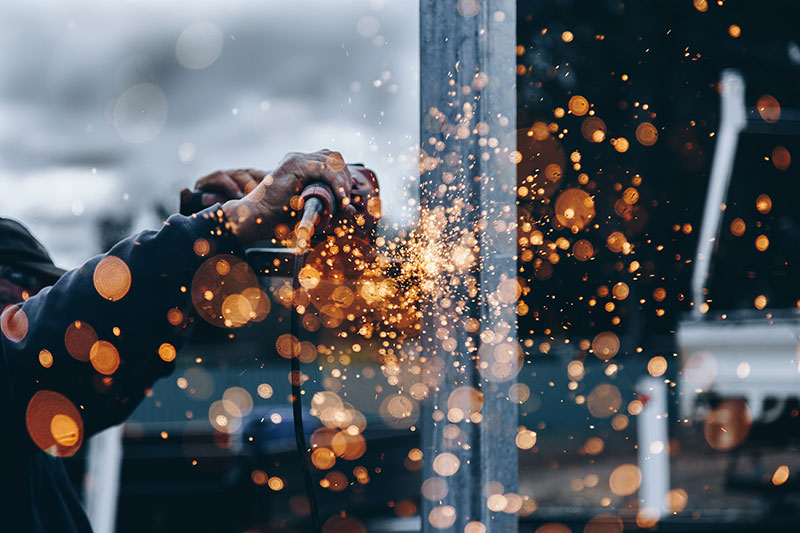Advertisement
You’ve likely come across numerous machinery types if you’re involved in construction work. While they all have a unique purpose, some tend to be more supreme than others. This is typically due to their versatility and strength. Below you’ll discover some of the top construction machinery options and why they’re key.
6 Vital Machines for Construction Companies
1. Forklifts
This device might not seem as important as other machinery, but forklifts are surprisingly vital. Forklifts make moving heavy items easy, especially those that would take multiple employees hours to move on their own. Better yet, because they tend to be a bit smaller than other equipment options, forklifts are a useful tool for getting into tricky areas.
A distinctive feature of forklifts is that they can be equipped with extensions. Fork extensions come in multiple sizes and can even be custom-made for your machine. Made of strong steel, they have a tapered design that helps simplify loading and unloading. Thanks to this, you can quickly move items of all sizes without worries.
If you’re unsure how long your extensions should be, carefully review OSHA machinery guidelines. In most cases, your extensions shouldn’t extend 1.5 times the length of the pre-existing forks. This guarantees that the load doesn’t overwhelm the forklift and that both the machine and driver stay safe.
2. Bulldozers
Bulldozers are one of the most frequently used machines at construction sites. With their heavy-duty frame, they can easily push through massive dirt loads. Besides doing earthmoving work, bulldozers can scrap the ground, making way for pavers.
One interesting aspect of this device is that its treads make it less likely to sink into the ground. This makes it a great option for muddy or rough landscapes as they won’t usually get stuck. Their treads can also help level out the terrain.
Some bulldozer models you’ll come across are:
- Crawlers
- S or U-blade
- Power-angle-tilt
- Mini
- Wheel
3. Excavators
Another crucial machine is an excavator. Featuring a rotating platform, workers can maneuver its boom and bucket in different directions to scoop and release the debris.
Excavators are a favorite in the industry because they’re so versatile. The only downside is that they can be expensive. However, the investment is usually well worth it because they’re built to last.
There are many excavator models to choose from. Some include:
- Crawlers
- Hydraulic
- Dragline
- Wheeled
- Suction
- Long reach
- Skid
These all have their own purposes, so it’s crucial to carefully inspect what each is made for to ensure the excavator will fit your needs.
4. Dump Trucks
To haul dirt and construction materials away, these vehicles are quite useful. Dump trucks come in various sizes and are equipped with different features depending on your needs. For instance, a standard model is ideal if you need to do basic hauling. On the other hand, if you need precision when unloading certain materials (like gravel), a bottom dump truck might be what you need.
5. Trenchers
This machine is built to dig trenches. You’ll come across two main trencher types: walk-behind and ride-on. As its name suggests, a walk-behind trencher requires you to walk behind it to guide it as it moves. A ride-on trencher has a seat you can sit on as you drive the machine through the soil. A ride-on one is usually best for heavy-duty jobs.
6. Tower Cranes
If you plan to build tall structures, tower cranes are a must. These can be built to a certain height and then attached with ropes and buckets to haul items to various levels. Moving a crane contains a bottom cab that an operator can adjust.
There are three primary tower crane categories:
- Hammerhead (the most commonly relied-on that features a 360° rotating jib)
- Luffing (similar to a hammerhead but has a lattice jib)
- Self-erecting (a compact option that can be quickly installed)
While their substantial size might seem like they’d make a project take longer, they actually have the opposite effect. In most cases, it will take about a day to set up the tower crane fully, so there’s no major waiting period. After this, the job can start. In addition, tower cranes can lift hefty items (like steel bars) in seconds up multiple stories – something which might otherwise take workers hours.
Because of their size and strength, there are regulations that construction companies must follow to install and operate one legally. In most states, you’ll need to confirm that the tower crane operator has a license to run it.
There are many devices that construction companies need to use. Whether trenchers or forklifts, you need to guarantee that your site is equipped with the right machines. With this information, you can better acquaint yourself with the vast selection available to determine which devices are right for your projects.

